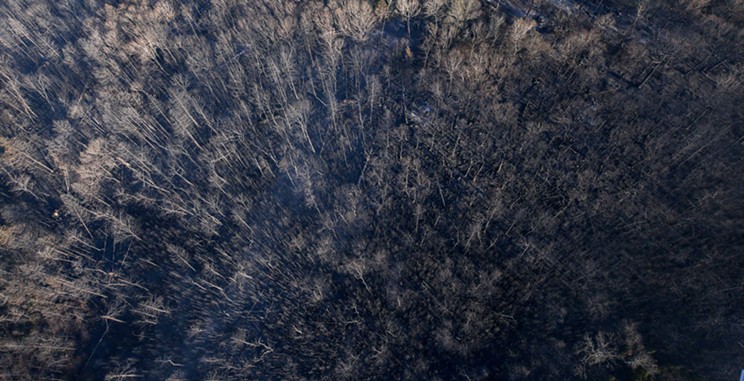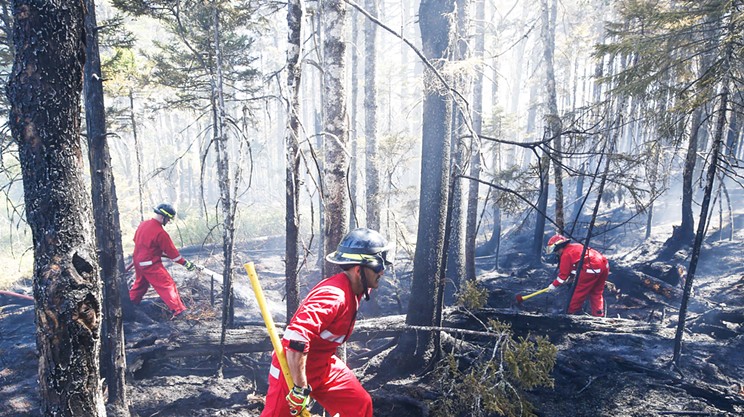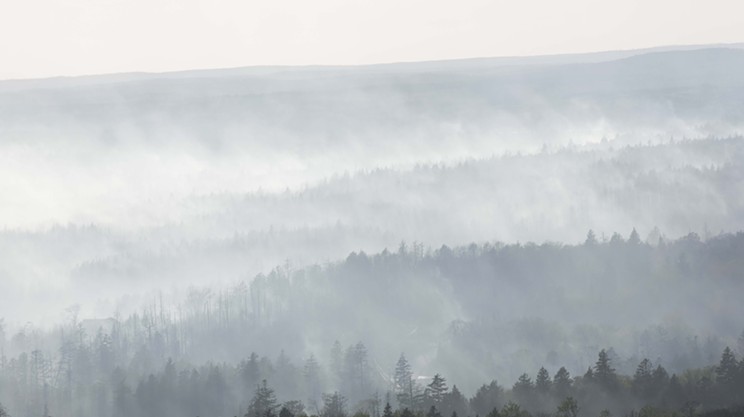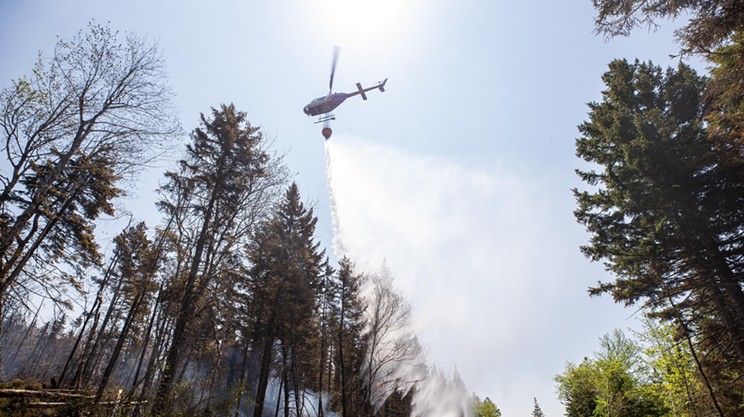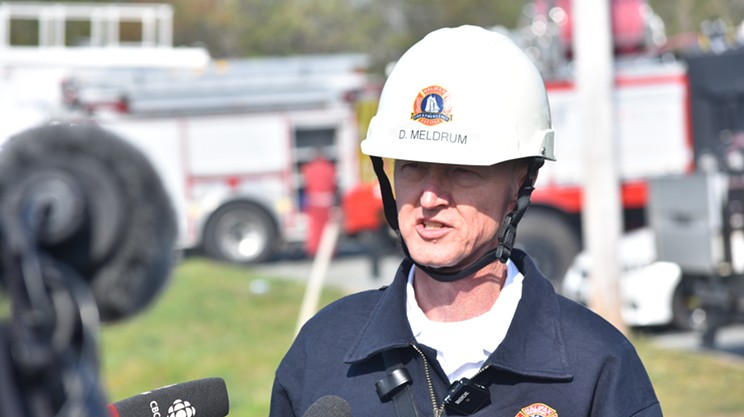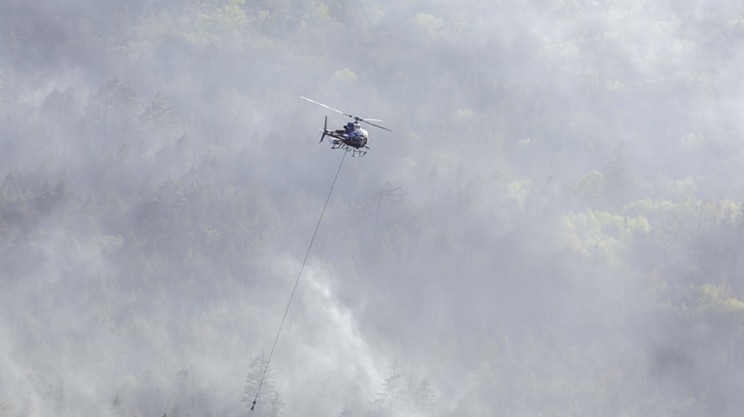On any other week, a seven-day downpour weather forecast in June might have prompted a spree of four-letter lamentations across Halifax. Not this time. Not for a while, either, one imagines. As firefighters surpassed a week of battling a 950-hectare wildfire that has prompted the evacuation of more than 16,400 Haligonians, every droplet on Saturday and Sunday came with a near-audible sigh of relief across the HRM. You could hear it; feel it in the air.
“Many of us have never followed the rain forecast as much,” Halifax mayor Mike Savage said in a wildfire update on June 4.
The good news: As of Monday, fire crews say the wildfires that have destroyed roughly 150 homes and damaged 50 more buildings across Tantallon and Hammonds Plains are “100% contained.” Speaking with reporters on Sunday, David Steeves, a forestry resource technician with the province’s Department of Natural Resources, described the wildfire situation northwest of Halifax as “under control,” thanks in part to an estimated 40 to 50 millimetres of weekend rainfall. That said, he cautions that an “extensive amount” of work remains before the fires are fully extinguished.
“This is a very labour-intensive process to actually call this fire out,” Steeves said Sunday, “so declaring this fire out will likely take some time yet, and it won’t be done until our command team on the ground is fully satisfied with the situation… Things are wet, but just because they are wet does not mean that we are totally finished in this endeavour.”
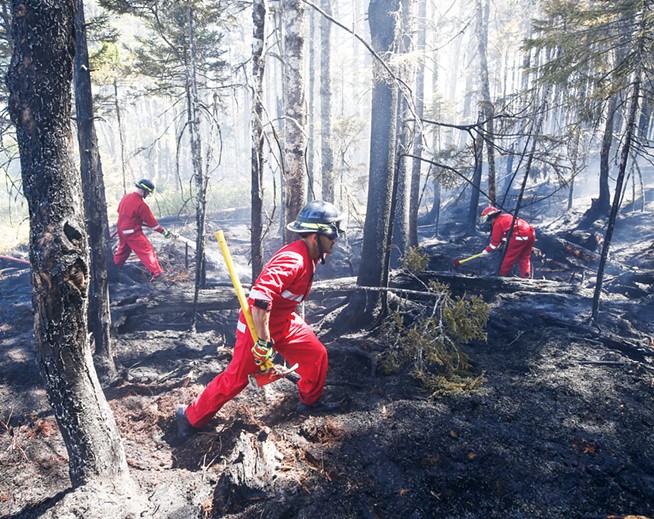
Hotspots remain a concern. So, too, does the math: In the first five months of 2023, Nova Scotia has seen nearly five times the area of forest lost to wildfires as in the previous six years combined.
We’re not even a week into June.
In a Sunday update, provincial forest protection manager Scott Tingley told reporters an estimated 26,680 hectares of forest have burned across Nova Scotia this year. Much of that has come in Shelburne County, where firefighters continue to battle the largest wildfire in Nova Scotia’s history. As of Monday, it’s still deemed out of control.
“We do still have plenty of summer ahead of us as a province, and as a country,” Tingley said. “We certainly welcome the rain, but we’re not letting our guard down; there’s still a lot of work to do.”
Parks and trails reopen, some evacuees return to their homes
One glimmer of hope for Nova Scotians: Parks and trails are back open, though a burn ban remains in place. On Sunday, Nova Scotia premier Tim Houston announced that all provincial parks and trails would reopen to hikers, campers and fishers as of 12:01am Monday morning, ending a six-day travel and activity ban in Nova Scotia’s woods.
The HRM’s municipal parks and trails—including Point Pleasant Park and Shubie Park—are following suit. On Monday morning, the region announced that staff would be visiting parks “as quickly as possible” to remove barricades and signage at parks across the HRM.
Halifax has also begun shrinking its fire evacuation zone, lifting evacuation orders for residents of the Glen Arbour subdivision and those living in the area east of Stillwater Lake and south of Hammonds Plains Road. Speaking Sunday, Mayor Savage said it “could be one or two weeks” before other residents are able to return to their homes. In an update released Monday afternoon, the city says roughly 4,886 residents are still waiting to return to their homes, down from 16,492 at the peak of the fires.
Meanwhile, councillor Pam Lovelace—who lives in Hammonds Plains and was among the thousands of Haligonians forced to flee their homes last week—told CBC News that residents have been concerned about evacuation routes in the fire-affected area for years now.
“More evacuation routes are needed for Westwood Hills, White Hills, Glen Arbour, Maplewood and Upper Hammonds Plains,” she said. “There’s a lot more work that needs to be done.”

